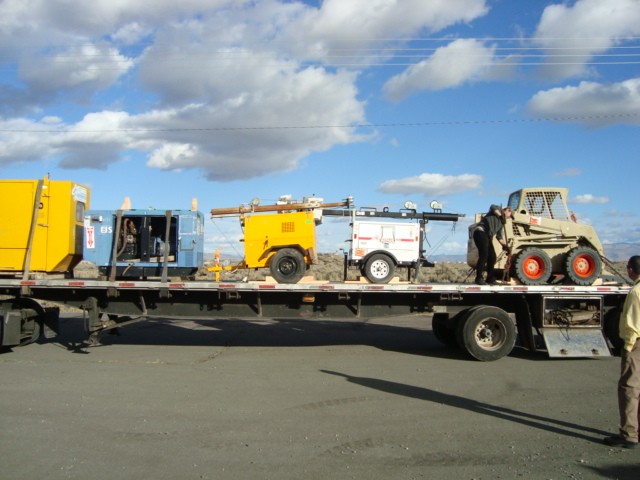HERLONG, Calif. -- As the stage was set for the Iraq War effort to be drawn down, the creation of the non-standard-equipment mission began.
Non-standard equipment is generally defined as commercially available equipment and is not for combat or force protection missions. This equipment, at one point, was required by the U.S. in Iraq. Examples of this type of equipment include commercial generators, bobcats, floodlights, and cement mixers to name a few.
Sierra Army Depot, with its unique posture and expansive installation footprint capable of accommodating any type of surge operation to support the drawdown effort from Southwest Asia, was designated as the focal point for the Department of the Army to begin receiving non-standard equipment from downsized units in Iraq.
This mission called for the expertise of personnel, already trained and in place, to begin the process of receiving containers which have been loaded in Southwest Asia full of equipment of the non-standard type.
In October of 2009, a Lean event was held at SIAD to discuss the process of receiving and storing non-standard equipment. The Lean team established guidelines and a process which allowed for identification and receipt/storage of all assets deemed to be non-standard equipment. The Lean event created the process to ensure accountability of every asset received.
In November of 2009, Sierra Army Depot sent two individuals to their headquarters, TACOM Life Cycle Management Center located in Warren, Mich., to begin the first phase of the mission - set up an accountability record and assign the mission a Unit Identifier Code assigned to the current Installation code.
A new property accountability record was established through the use of the Property Book Unit Supply Enhanced (PBUSE). This accountability record would allow for easy access of all assets in a web based accountability record as well as allowing a global disposition record for the entire Department of the Army.
Shortly thereafter, Sierra Army Depot received the first pieces of equipment, 13 containers of electronics from Kuwait. These items were inventoried to verify asset compliance and placed into the PBUSE accountability record. The assets were then placed into a designated storage facility.
New technology allowed the receipt process of the non-standard equipment to be more user friendly. Prior to assets returning from Southwest Asia, a barcode is affixed to the containers, so they can be scanned on the receiving lines at Sierra Army Depot.
The barcode or Equipment List Identifier (ELID), sticker is scanned with a barcode reader where a temporary file is stored. The file is then uploaded into PBUSE for accountability of assets. Once in the storage facility, the assets are placed into the Army War Reserve Deployment System (AWRDS), where a file is created for storage purposes. The file can be uploaded into a handheld barcode reader and assets are counted in the storage facility by quantity and location.
As visibility of assets became available, more and more outside interest became apparent. In September of 2010, a representative from the Department of the Army for Logistics (G-4) along with several representatives from the National Association of State Agencies for Surplus Property (NASASP) to look over 130 plus pieces of equipment (mostly generators, a few bobcats, non-standard trailers, forklifts and a few dozers and backhoes). In addition to taking pictures, they also recorded miles, hours, condition, serial-number, make and model for the equipment.
At the end of the visit, NASASP representatives identified an interest in 105 of the 130 plus items; total acquisition value of the equipment totaled $3.9 million. Less than one month after the initial visit by NASASP representatives, the government transferred various types of equipment to 11 states to be used primarily by schools, hospitals, fire and police departments, or senior centers to name a few.
NASASP was very appreciative the Army is going the extra mile to get equipment into their hands.
Sierra continues to receive, store and re-issue equipment on a daily basis. To date, the Depot has received over 16,200 assets totaling $88 million from Camp Arifjan, Kuwait. Through disposition orders, SIAD has shipped 7,812 assets to 153 different locations, totaling over $37 million. Since the first asset induction into the PBUSE database, five quarterly inventories have been completed with 100 percent asset accountability.
This program helps make sure that excess non-standard equipment is accounted for and put to good use.
Related Links:
National Association of State Agencies for Surplus Property (NASASP)


Social Sharing